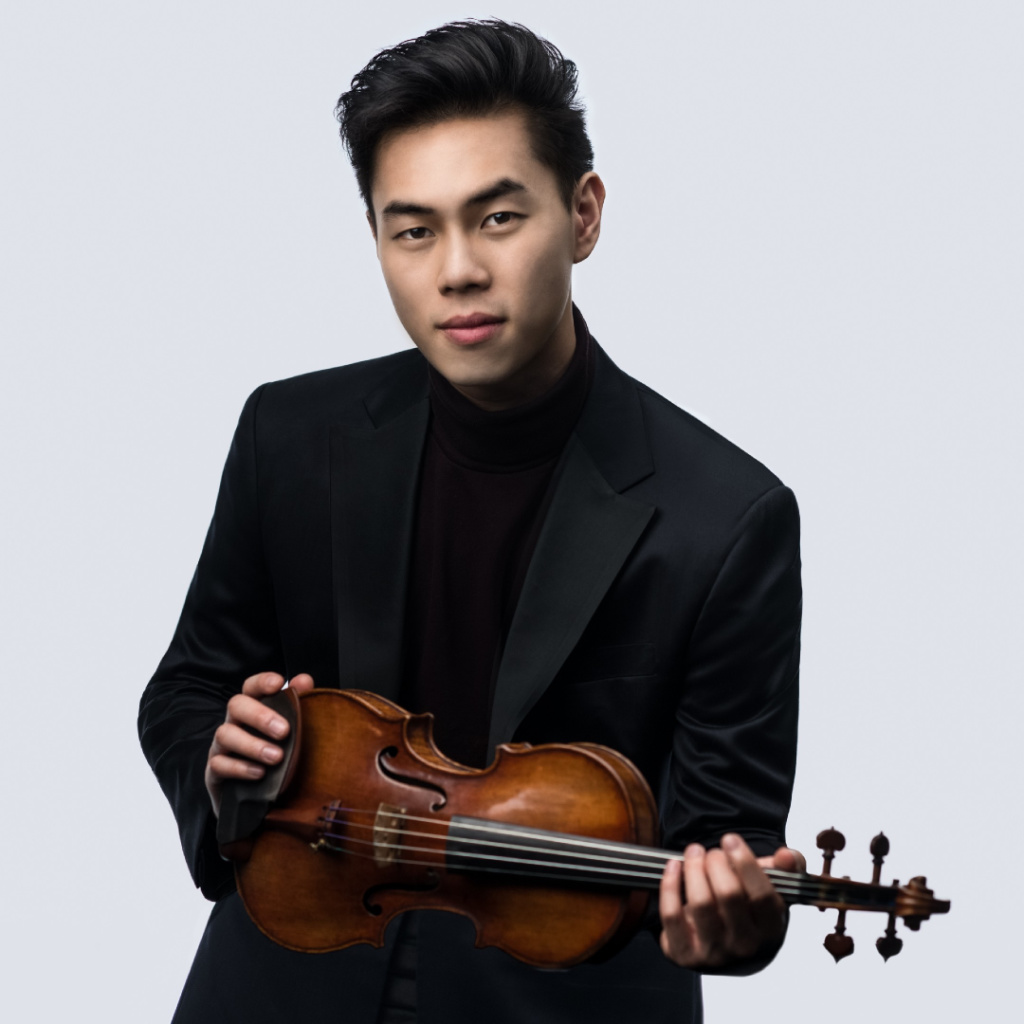The Artists
Judith Yan
Timothy Chooi
Sleeping Beauty
Judith Yan, conductor
Timothy Chooi, violin
Saskatoon Symphony Orchestra
Scottish Fantasy, Op. 46
I. Introduction: Grave. Adagio cantabile
II. Scherzo: Allegro
III. Andante sostenuto
IV. Finale: Allegro guerriero
Max Bruch
INTERMISSION
The SSO Sleeping Beauty Suite
INTRODUCTION – The Baptism of Princess Aurora
Introduction
No. 1 Marche
No. 4 Finale – Entrance of Carabosse – Entrance of the Lilac Fairy
ACT I – Princess Aurora’s Ball
No. 6 Valse – Princess Aurora’s 16th Birthday
No. 7 Scène – Entrance of Aurora
No. 8 Rose Adagio – Princess Aurora dances with 4 Princes
No. 9 Finale – The Curse of Carabosse – Lilac Fairy casts a spell
ACT II – Prince Désiré and Princess Aurora
No. 15 Lilac Fairy shows Prince Désiré a vision of the Princess
No. 19 & No.20 Prince defeats Carabosse – and wakes Princess Aurora
ACT III – The Wedding of Princess Aurora and Prince Désiré
No. 30 Finale & Apothéoses
Pyotr Ilyich Tchaikovsky
Compiled by Judith Yan
Scottish Fantasy, Op. 46
Scottish Fantasy is a composition for violin and orchestra by Max Bruch. It was completed in 1880, dedicated to the virtuoso violinist Pablo de Sarasate. Originally titled Fantasy for Violin with Orchestra and Harp, it prominently features Scottish folk melodies. Bruch’s inclusion of the harp pays homage to the rich tradition of old Scottish music.
Being inspired by Scottish folk melodies, Bruch weaves them throughout the piece, giving it a distinct national character. For the soloist, this work allows one to showcase a wide range of violin techniques, including double stops, rapid passages, and lyrical melodies, highlighting the instrument’s expressive potential.

The first movement is built on “Through the Wood Laddie”, which appears at the beginning of the Adagio Cantabile.
The second movement is a energetic Scherzo, with the soloist stating the reference of “The Dusty Miller” at its entrance.
The third movement is based on the tune “I’m A’ Doun for Lack O’ Johnnie”.
Finally, the last movement includes both arrangements of “Hey Tuttie Tatie” and “Scots Wha Hae”.
Max Bruch
German Romantic composer Max Bruch was born in 1838 in Cologne, Germany. He had displayed musical talent from a young age, composing his first symphony at the age of 14. After studying philosophy and art briefly, he had a long career as a teacher, conductor, and composer. He studied under esteemed teachers such as Ferdinand Hiller and Carl Reinecke, which significantly shaped his musical style and technical proficiency.
Max Bruch’s works, known for their complexity and solid structure within the German Romantic tradition, aligned him with the Romantic classicism of Johannes Brahms, rather than the progressive “New Music” movement led by Franz Liszt and Richard Wagner. In his Violin Concerto No. 1 in G minor (one of the most popular Romantic violin concertos), he omitts the Classical opening orchestral exposition and other conservative formal structural devices of earlier concertos.
Although most of Bruch’s work is overlooked today, few pieces like his Violin Concerto No.1, Scottish Fantasy still remain in concert repertoires collections, and showcase his exceptional talent for crafting melodies.
Pyotr Ilyich Tchaikovsky
Born on May 7, 1840 during the Romantic Period, Tchaikovsky was the first Russian composer whose music would make a lasting impression internationally.
Growing up with education for a civil servant career, Tchaikovsky was able to find an opportunity for music education and entered the nascent Saint Petersburg Conservatory.
Despite his popular successes in composing Swan Lake, The Nutcracker, the 1812 Overture, First Piano Concerto, Violin Concerto, Romeo and Juliet and many more, Tchaikovsky’s life was punctuated by personal crises and depression. Contributory factors included his early separation from his mother for boarding school followed by his mother’s early death, the death of his close friend and colleague Nikolai Rubinstein, his failed marriage with Antonina Miliukova, and the collapse of his 13-year association with the wealthy patroness Nadezhda von Meck. Tchaikovsky’s homosexuality, which he kept private, has traditionally also been considered a major factor though some scholars have played down its importance.
Special Thanks To The Following
Our Partners
